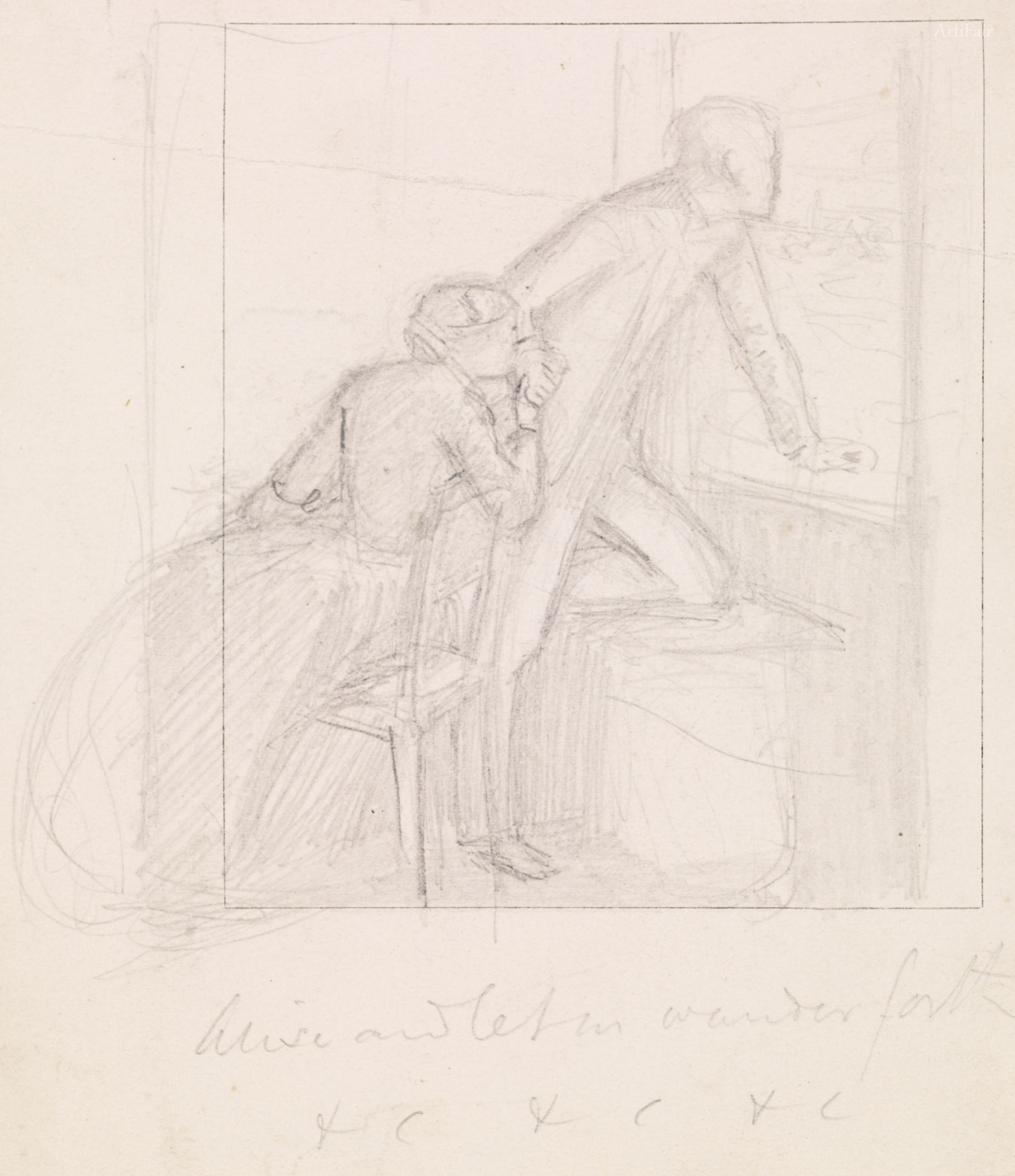
Art Appreciation
The artwork captivates with its raw simplicity, serving as a study for a more elaborate concept. Two figures emerge subtly from the textured paper, rendered in gentle pencil strokes that blur the line between spontaneity and intention; the viewer feels as though they are witnessing an intimate moment. One figure stands, captivated by the view beyond the window, embodying a sense of longing or awareness, while the seated figure leans forward, seemingly reflecting or pondering deeply, illustrating the depths of human emotion as they gaze out together—together yet apart, lost in thought. The balance of their bodies creates a dynamic tension: the standing figure's assertive stance contrasts with the seated figure's contemplation, evoking curiosity about their relationship; are they lovers, friends, or family? We are left to imagine their narrative as we analyze their postures and expressions, which invite personal interpretations.
The color palette is minimalistic, dominated by the soft grays of the pencil, which adds a ghostly quality to the figures. This choice of medium not only contributes to the ethereal effect but also aligns with the emotive content of the piece; it's as if the artist intended to convey a transient moment, fragile and fleeting. Looking closer, one can almost hear the quietness of the scene, feeling the weight of silence, broken only by the imaginary sounds of rustling leaves or a gentle breeze. This piece exists within the broader context of Millais’ explorative nature in art, as an artist who often merged the meticulous detail of the Pre-Raphaelite Brotherhood with emotional depth. Here, in this study, we sense the freedom of artistic exploration while remaining grounded in the connections between human figures—an interplay that speaks volumes about Millais’ vision and practice during the 19th century.